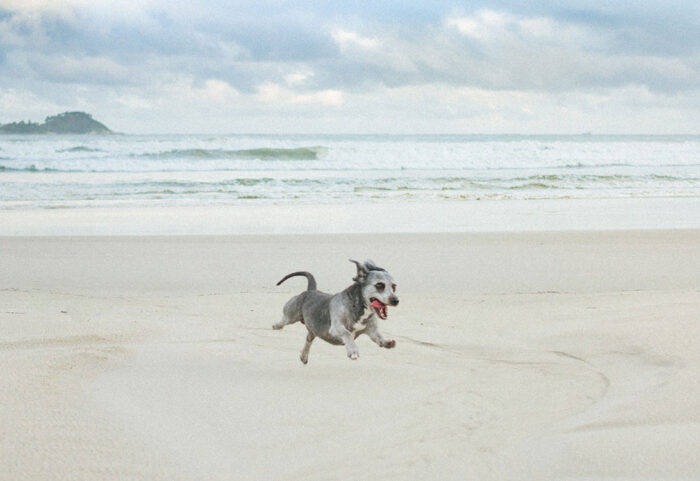Apartment Living With A Large Dog
Ever since I was a young child I always wanted a dog, but having siblings with dog allergies meant a pup was never in the cards. After I graduated from college, my first order of business was to find my new best friend. I knew I wanted a large dog, but like many people starting a new job my budget would only allow for apartment living. I learned a lot about living with a large dog in a small space, and today I will be outlining some factors you need to consider if you are thinking about having a large dog join your family while living in an apartment.
Choosing An Apartment
When on the hunt for a new apartment it is important to consider whether or not the property is dog friendly. Dog friendly does not only mean that they allow larger dogs, but that they offer the proper space or amenities to accommodate a large dog’s lifestyle. Some questions to consider when selecting an apartment:
- Do they have a dedicated outside area for dogs?
- Is this outside area big enough for a large dogs?
- Does the the dog area have trash can and poop bags available? (while the poop bags are not a deal breaker, the cost of buying bags can really stack up so it is something to consider)
- What large dog breeds are permitted? Some apartments won’t allow “dangerous” breeds such as Pit Bulls or Rottweilers.
- How many stairs will my dog have to climb to get to my apartment? This is particularly important later on in your dog’s life.
- Is the apartment building located next to a busy street?
In The Mornings
A morning walk or jog is not only a healthy start to your day, but also essential for keeping your dog fit and to burn off some your dog’s energy before you depart for the day. The breed, age, and overall energy level will determine what type of morning activity is necessary. Some larger breeds like a Great Dane or Bernese Mountain Dog might only require a brisk walk, while more energetic breeds like a Weimaraner or Labrador will appreciate a 1 mile plus run. Of course all dogs are unique wonderful individuals, so make sure to assess your dog’s exercise needs as soon as possible in order to accommodate a morning activity that you can manage in your daily routine. Exercising with your dog in the morning can prevent destructive or barking throughout the day. On the topic of barking that brings us to our next topic… neighbors.
Neighbors
One aspect of apartment life that you have very little control over is who lives beside, above or below you. If your dog shows signs of separation anxiety and barks constantly throughout the day, it creates a poor situation for your pet and those living around you. Many times we can be protective of our pet, and be inclined to brush off criticism others offer up. If your neighbor brings your dog’s barking to your attention, don’t dismiss this feedback as an insult. Instead acknowledge the feedback and work on a plan to address it. A couple of considerations that can help you to better understand and manage your dog’s behavior while you are away:
- In home camera to observe your dog’s behavior and identify triggers.
- If knocking at the door sets off a barking fit and you are expecting deliveries while you are not home, consider leaving a note for the delivery person to not knock on the door.
- Create a nest for your dog, somewhere they can relax and have limited exposure to stimuli. A crate can serve this purpose even if you do not expect them to stay in that crate all day.
- If your dog is particularly upset right when you leave the house, you can try feeding them their breakfast prior to departing. Heavily food motivated might be distracted while you slip away.
- Provide access to toys that challenge your dog mentally.
Lastly, though they do not mean to, large dogs can make a lot of noise simply from moving around. If possible consider finding a ground level apartment to reduce the impact of noise made from your dog’s movements. Getting off furniture or just simply plopping down for a good stretch can sometimes make more noise than expected. In short, limit the opportunities for your neighbors to take issues with your dog.
Roommates
There is not a whole lot to cover in regards to roommates other than to make sure they are absolutely on board with living with a you and your dog. The idea of having a dog in the apartment may sound great at first, but the day to day reality can sometimes be too much to handle. While your roommate might say they are OK with having a dog in the house, you might consider a trial run first. There are a lot of rescues that have a severe shortage of volunteers willing to foster rescue dogs. This can be a great opportunity to bring a into your home for a shorter period of time. Just remember when you sign up to be a foster, you are committing to shelter your foster until they find a permanent home. In the end you may find that your “temporary” foster is actually the perfect dog for you and your roommate.
During The Day
If you are fortunate enough to work in a dog friendly office, you may have the opportunity to take your dog to work. This doesn’t mean you can forgo the aforementioned exercise! Plan out what items are necessary to take to the office for your dog, and leave a backup reserve of essential items like poop bags and treats at your desk. While dog friendly offices are on the rise, the chances are that this will not be an option for most dog owners so you will have to figure out a way to have provide your dog access to the outdoors while you are away. The most common solution is to hire a dog walker. There are numerous places to find dog walkers, but be aware this is not a cheap solution. While I was living in Los Angeles, the going rate for a dog walker was $20 per walk. Working five days a week that added up to nearly $400 per month. Some walkers will offer discounts on the per walk rate when you buy in bulk, and of course prices will vary. You really have to consider how a dog walker will impact your budget BEFORE getting a dog, and make sure it works you and your budget. Another options is doggie daycare. When considering a daycare facility there are a couple questions you should ask:
- Can I afford this? Daycare rates are often more expensive than dog walkers.
- Is my dog comfortable around larger groups of dogs?
- Is my dog properly socialized?
- Is the daycare facility on the same route as my commute?
- If not, how much time do I need to allow for pickup and drop off?
- Can my car accommodate transporting a large dog to and from daycare each day?
Ultimately owning a dog often times ends up being more expensive for apartment dwellers than those living in a house. The implications dog ownership will have on your budget should be considered prior to bringing a dog into your family. If daytime options like leaving your dog with a family member or working remotely are on the table, it can drastically reduce the monthly cost of owning a dog.
Summary
Owning a dog is a life changing experience, but one that requires proper planning to ensure a happy life for the dog and their owner. Living in an apartment adds another layer of complexity to the situation and should be thoroughly thought out. Consider how bringing a dog into your home will change your daily routine, budget, and overall quality of life. If you can comfortably check all the boxes, then owning a dog will be one of the best decisions you will ever make.


